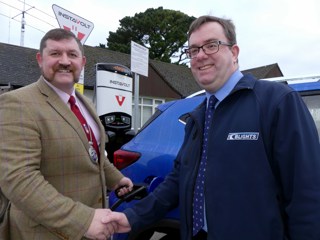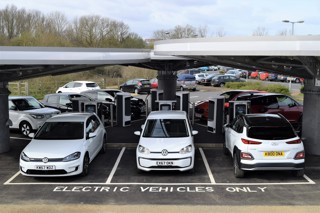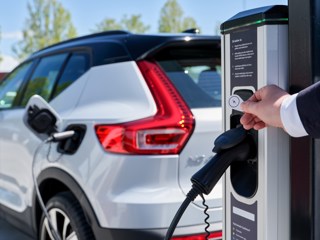The move towards an electric vehicle (EV) future is gathering pace might be led by automotive manufacturers but it presents car dealerships with range of revenue-driving opportunities.
Volkswagen has already announced plans to phase out conventional combustion engine vehicles, while Porsche wants half of its production to be fully electric by 2023, and Volvo aims for half of its sales to be fully electric by 2025.
Dealerships are in a unique position to capitalise from this shift and the added revenue streams it drives; not only by selling a new generation of vehicles, but by increasing foot traffic on the showroom floor by transforming the customer experience. That opportunity starts with charging infrastructure.
As with petrol-powered vehicles, EV owners want – and increasingly demand – to charge their cars quickly while on the go. Providing a way to do so through the installation of a publicly-available charging station at the dealership will attract both new and existing customers. While the EV is charging, salespeople can showcase their service excellence through ongoing discussions on options for new tyres, wheel alignments, servicing, mapping upgrades, software updates, and even new cars.
But not all charging options can yield this volume of return. Ultimately, it comes down to the driving range a charger can add to an EV.
Powering the customer and driving foot traffic
In 20 minutes, a typical 7.2kW home charger can add just under nine miles of range to a vehicle, while a 25kW commercial charger can add about 30 miles of range. Many dealerships might be tempted to install one of these options as a low-budget solution, however the return on investment is very limited. While they may be suitable for the dealership’s needs up to the point of sale, they will not generate the type of ongoing value that converts one-time visitors into repeat customers.
Recent research indicates that the average daily commute for drivers in the United Kingdoms (UK) is about 20 miles. At the aforementioned charge speeds, an EV owner would need to wait at least 20 minutes with a 25kW charger to add enough range to match that average, which is just enough for a daily commute, and nearly an hour with a 7.2kW charger.
These inhibitions have rendered 50kW DC rapid chargers as the standard – in 20 minutes, these chargers can add 60 miles of range, or nearly three days of the average daily commute in the UK.
The availability of a rapid charging option expands a dealership into a trusted charging station that is likely to have EV owners re-visiting; customers will be guaranteed a dedicated pit-stop where they can top up quickly if their battery is low.
Attracting repeat business with rapid charging
A tyre company in Australia recently announced its plans to install 50kW DC rapid chargers at all of its stores. The reason for the move is clear: while the customer is charging their vehicle, salespeople can discuss everything from optional tyre checks to re-treads, and potentially close another sale.
A 20-minute charge window is short enough to attract the driver with low wait times and to add enough range for their needs, and long enough for a salesperson to engage them meaningfully: in the time it takes to add 60 miles of range to a vehicle, alert salespeople can discuss everything from software and firmware upgrades to newer models.
In this scenario, the charger delivers ongoing value-add to the business, rather than a sunk cost. Salespeople can build relationships with their customers that extend beyond the original sale of the vehicle – and with the threat of the online marketplace, this is a unique opportunity to attract a loyal breed of customers.
Transforming the image of the dealership
In addition to the engagement benefits, existing 50kW DC rapid chargers can be designed and manufactured to transform the face of the dealership and position it firmly on the cutting edge.
Modern 50kW chargers resemble state-of-the-art petrol pumps with interactive interfaces. They can be installed outside and can handle weather of all kinds – from sub-30 degrees all the way to 50 degrees Celsius in some cases – and they can also be installed inside the dealership as both the charger and the cars do not emit fumes. Additionally, they can be customised to suit or enhance the dealership aesthetic. Chargers can be modified with the dealership’s logos and colours, while the physical footprint of these chargers can be minimal – thus ensuring they are in line with the look and feel of the dealership.
But most importantly, EVs are considered progressive, green and technologically advanced – and installing a modern rapid charger with similar traits will only serve to enhance the dealer brand.
EVs are not just here to stay – they will become the status quo. With that comes a new wave of business – and repeat business. Unlike combustion engine vehicles (in which return business often boils down to contractual servicing requirements), electric equivalents allow dealerships to foster long-lasting relationships and brand loyalty.
The rise of EVs offers a unique opportunity for UK dealerships – and indeed their global counterparts – to transform the customer engagement paradigm and add true value to the customer sales experience.
Author: Marcelo Salgado is the chief sales officer for Tritium, a world leader in the development and supply of DC rapid-charging solutions for electric vehicles


















Login to comment
Comments
No comments have been made yet.